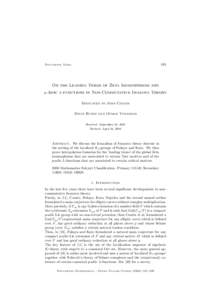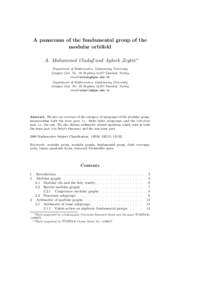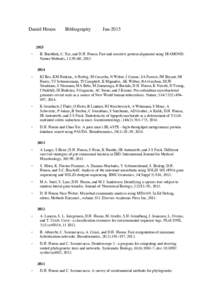<--- Back to Details
| First Page | Document Content | |
|---|---|---|
 Date: 2006-11-22 14:18:47Abstract algebra Algebra Mathematics Algebraic geometry Homological algebra Symbol Valuation Sheaf Motive Orbifold Holomorphic functional calculus |
Add to Reading List |
![Cycles and Subschemes 14Cxx [1] Timothy G. Abbott, Kiran S. Kedlaya, and David Roe, Bounding Picard numbers of surfaces using p-adic cohomology, Anita Buckley and Bal´azs Szendr¨oi, Orbifold Riemann-Roch for Cycles and Subschemes 14Cxx [1] Timothy G. Abbott, Kiran S. Kedlaya, and David Roe, Bounding Picard numbers of surfaces using p-adic cohomology, Anita Buckley and Bal´azs Szendr¨oi, Orbifold Riemann-Roch for](https://www.pdfsearch.io/img/e5fb1227c2302c2a93fe82b32e2f24f1.jpg) | Cycles and Subschemes 14Cxx [1] Timothy G. Abbott, Kiran S. Kedlaya, and David Roe, Bounding Picard numbers of surfaces using p-adic cohomology, Anita Buckley and Bal´azs Szendr¨oi, Orbifold Riemann-Roch forDocID: 1voxn - View Document |
 | A panaroma of the fundamental group of the modular orbifold A. Muhammed Uluda˘g∗and Ayberk Zeytin∗∗ Department of Mathematics, Galatasaray University ˙ CDocID: 1tBnz - View Document |
![On Topological Minors in Random Simplicial Complexes∗ Anna Gundert† Uli Wagner‡ arXiv:1404.2106v2 [math.CO] 4 May 2015 On Topological Minors in Random Simplicial Complexes∗ Anna Gundert† Uli Wagner‡ arXiv:1404.2106v2 [math.CO] 4 May 2015](https://www.pdfsearch.io/img/0d8a2bb2eb81e38518ef5a127499a599.jpg) | On Topological Minors in Random Simplicial Complexes∗ Anna Gundert† Uli Wagner‡ arXiv:1404.2106v2 [math.CO] 4 May 2015DocID: 1rnFz - View Document |
 | Daniel Huson Bibliography Jan-2015DocID: 1rhZV - View Document |
 | 165 Documenta Math. On the Leading Terms of Zeta Isomorphisms and p-Adic L-functions in Non-Commutative Iwasawa TheoryDocID: 1rfLe - View Document |
 165 Documenta Math. On the Leading Terms of Zeta Isomorphisms and p-Adic L-functions in Non-Commutative Iwasawa Theory
165 Documenta Math. On the Leading Terms of Zeta Isomorphisms and p-Adic L-functions in Non-Commutative Iwasawa Theory